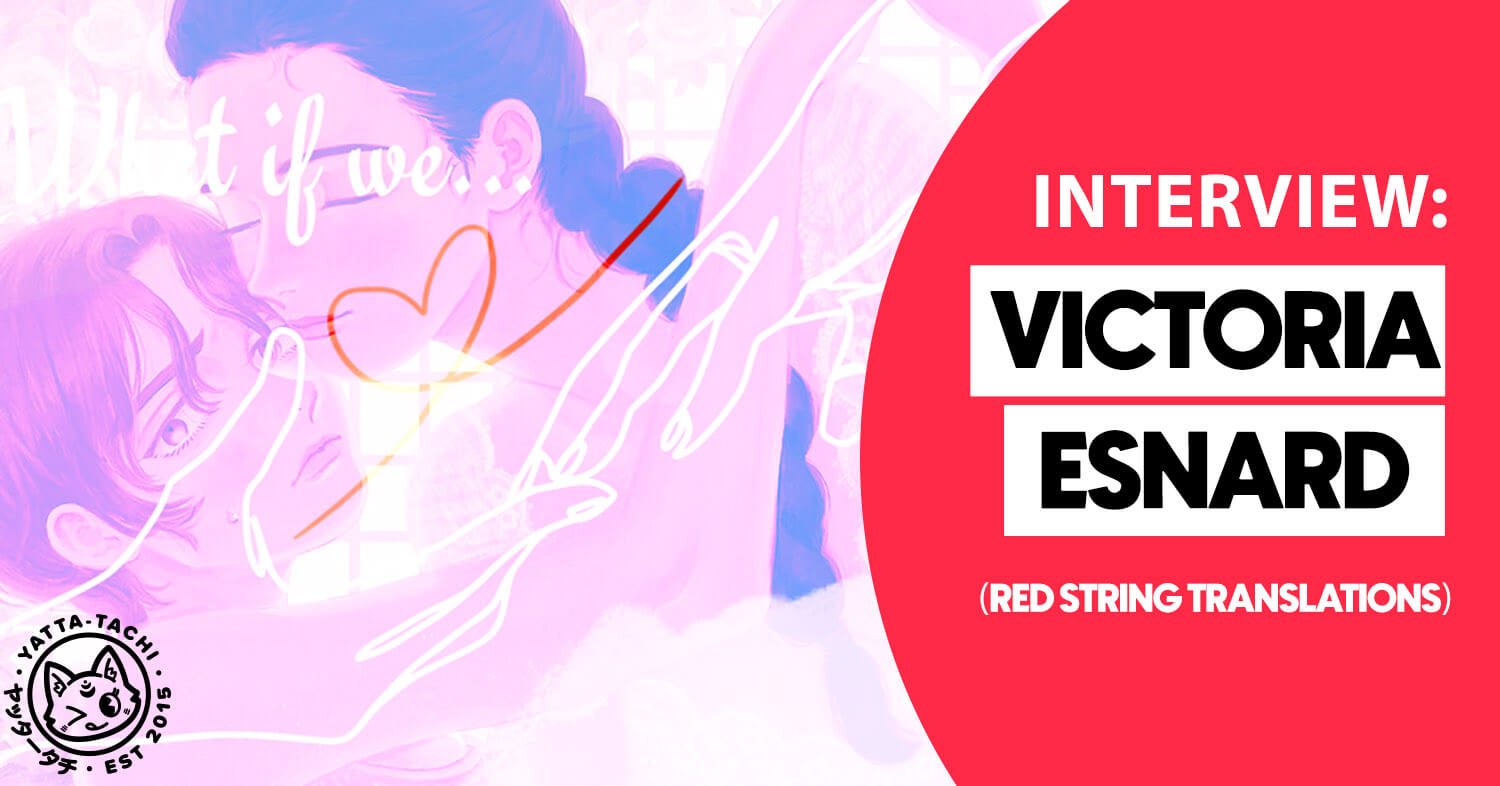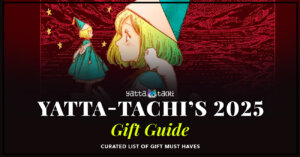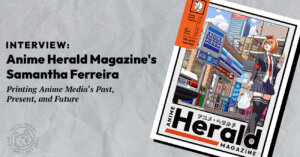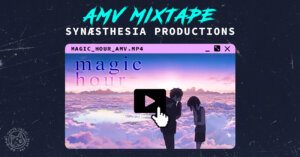The manga publishing industry is full of hardworking freelancers, and Victoria Esnard is one such freelancer. After moving to Japan in 2019 as part of the JET program, she connected with other JET affiliates to translate short web manga into English with the help of the artists themselves. Now, she works at Mugen Translations as a localization project manager, handling several series available on MANGA Plus. She also runs Red String Translations, which has contributed to the English versions of the yuri manga magazine Galette as well as to Manga Mavericks Books.
Yatta-Tachi had the opportunity to speak with Esnard about her process. We talked about many things, including being a young otaku in Canada, how to survive as a manga publishing freelancer, and her love of 2.5D stage performances.
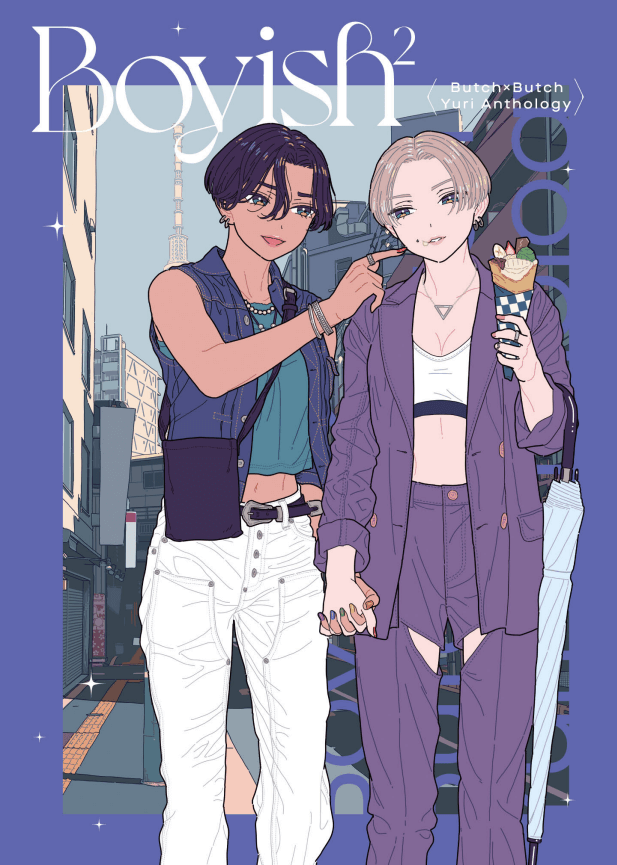
Where people rode their horses in the street
ADAM WESCOTT: How did you first become interested in anime and manga?
VICTORIA ESNARD: I went to a Canadian school, so the first comics I read were in French. I read most of Tintin, as well as Asterix and Obelix, in French as a kid. I was also big into newspaper comics at the time, like Calvin and Hobbes. We would get Archie often, too. Once I figured out what manga was, though, it opened up a whole new world. The first volume I ever bought must have been Dragon Ball at a local comics shop that had a very small manga selection.
WESCOTT: Was manga hard to find at the time?
ESNARD: I lived in the countryside, where people rode their horses on the street and bears popped out of the woods. I didn’t live anywhere near a store. If my dad was going to the convenience store, I would hop in the car. God, it makes me sound like I’m talking about the 1960s.
WESCOTT: Did you have other friends who read manga at the time?
ESNARD: Whatever I was into, my younger sister was into. We enjoyed that together, because we didn’t live near anybody. When I entered high school, classmates introduced me to more manga and anime. I subsisted off Shonen Jump, Nana, and whatever else was in Shojo Beat at the time. One of the first anime openings I remember being obsessed with was the one for Azumanga Daioh. I didn’t have access to the manga, but I found the DVDs in the Walmart bargain bin.
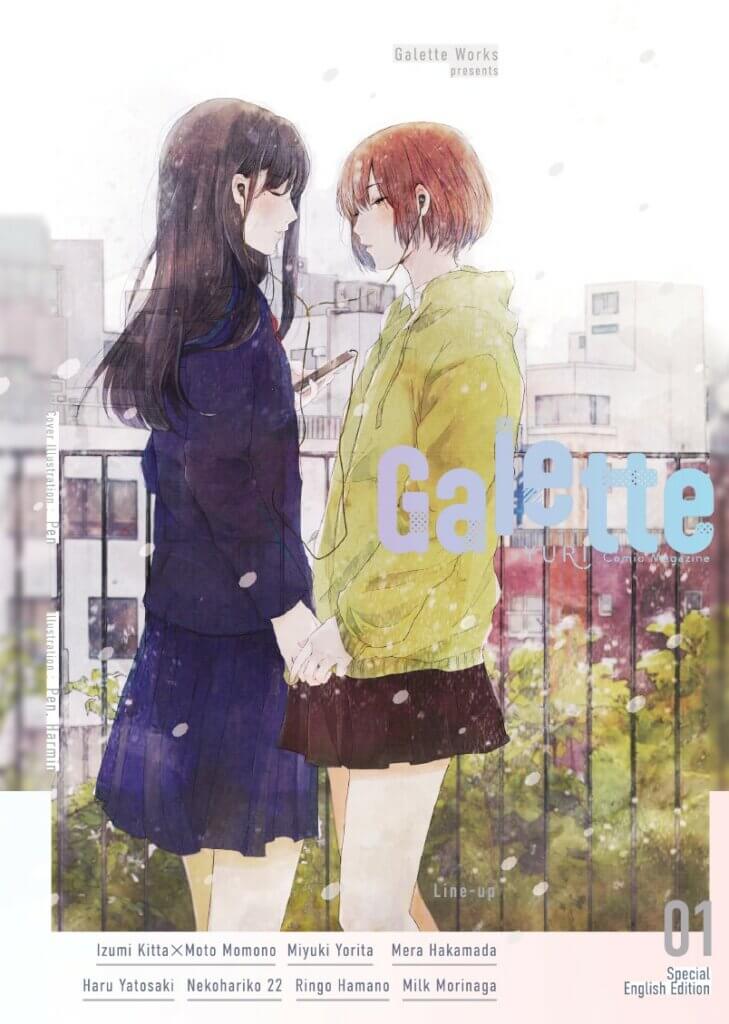
The Wild West
ESNARD: I went to my first anime convention when I was 13 in my local city of Ottawa. There was an event called naru2u, which I think ran for 3 years. It was the generation of yaoi paddles and getting married to strangers at the con who were much older than you. They’d put a metal bread tie on your finger, say you were married, and that was that. There were no rules, it was the Wild West. Everything that happened in the United States happened in Canada too, just on a smaller scale.
I cosplayed semi-professionally for a while. The first ones I did were Hatsune Miku and a terrible Zoro cosplay. Later, I won a Best in Show performance at FAN EXPO in Toronto. I did an original rap in Zombieland Saga cosplay and my wig almost fell off. It was bad, but somehow it worked.
WESCOTT: And now you’re a manga publishing industry freelancer.
ESNARD: As a freelancer, you choose your schedule. If I choose to be a workaholic because I took on multiple jobs two months ago without realizing they wrap up at the same time, that’s just how it is. This is the third or fourth time that I’ve done this in 2025.
For anyone thinking about starting a micropublishing business, or trying to go into localization as a sole proprietor…time management is so important. You have to understand what you’re able to commit to. I’ve got crazy time blindness, so I need to know how long something will take me. I almost never do, and I always underestimate. I’ll say that I need fifteen minutes to apply the edits to a manga chapter. Then it’s a 30 minute job because there was one page with a complicated lettering task that needed to be done, like a cellphone screen.
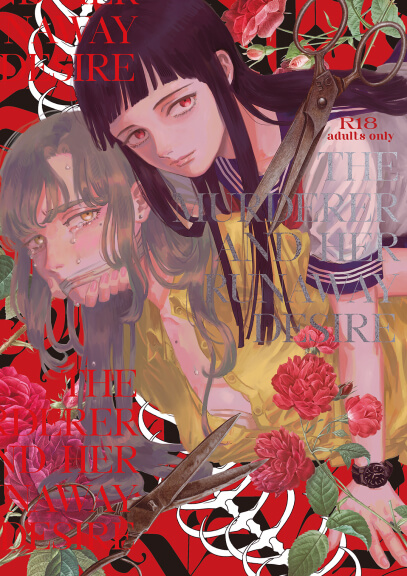
Starting from zero
WESCOTT: That sounds like a nightmare.
ESNARD: It’s easy once you figure out how to do it the first time. Lettering is where I started. It’s the easier skill to get into, so long as you have Photoshop and fonts. There are tiers to translation, though. I have lived in Japan for six years, and because I have kept myself so busy, I don’t study at all. My Japanese level is conversational; I can go about my daily life in Japan with no problems. But if you put something with complicated subject matter in front of me, I’m not going to be able to translate that quickly. It would take more research, more effort. Someone with better Japanese and more experience in the subject matter would have an easier time. So I leave translation to those people and handle everything else.
WESCOTT: Let’s break down what some of those other things are.
ESNARD: If I was to start from zero, the first thing you’re doing is licensing agreements and making deals. You’re looking for clients with work that you want to publish in English. Once you’ve been through the contract negotiations and you’ve signed everything, the client sends you their files.. Depending on if those are Clip Studio files, if they’re Photoshop files, or if retouch is retired, the file prep stage can take time.
Once that’s done, you hand the JPEGs or PDF to the translator and let them do their thing. Then I do both editing and lettering. I compare the script directly with the Japanese to make sure everything is there and nothing has been missed. From that point, whether it’s going to print or digital, there will be more file prep. Then you can close the case in normal circumstances.
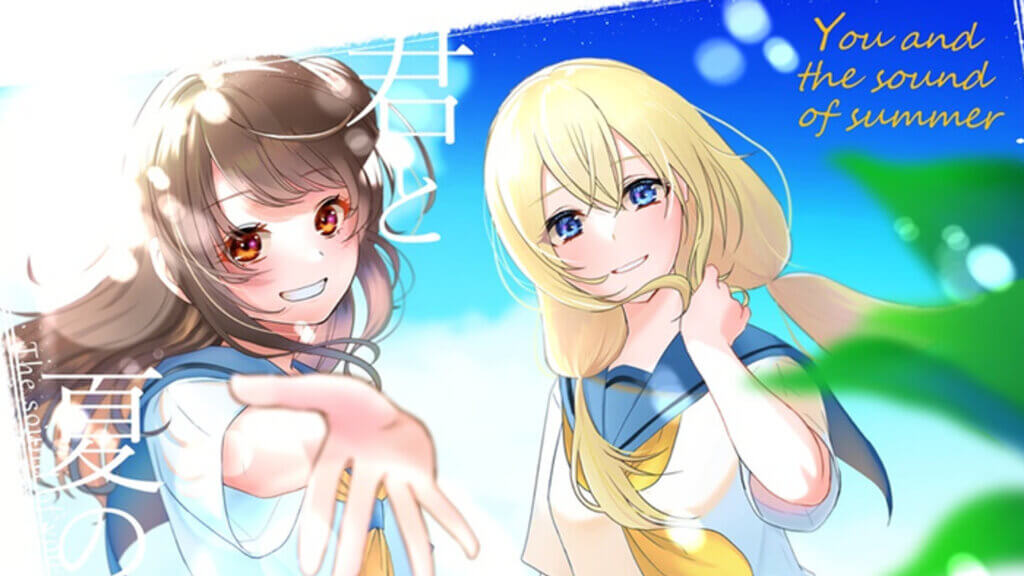
Reducing the number of steps
WESCOTT: Project managing is something you’ve been doing as well, right?
ESNARD: I’m a localization project manager for my day job. I work at a Japanese video game localization company, Mugen Creations, that more recently has gotten into manga. I’ve managed translators and letterers there for various manga projects, including some Jump Plus simulpubs. I lettered one of them myself: Magical Girl Tsubame: I Will (Not) Save The World! by the author of PPPPPP. The artist loved putting text over top of art that is not a font. I had to do a lot of retouching, but I also got away with some wild results. Because I was the letterer and project manager, I got away with doing the absolute most. Unfortunately, the manga was axed.
Mugen works on some of the best lettered and translated manga, with staff like the talented translator Mei Amaki. The quality is far too high for what should be a weekly simulpub, in the same way that people say Dandadan‘s art is too good to be a weekly series. But this could be the only time this artist’s work is going to be translated. I want it to be done at a high level of quality that everyone can be proud of.
WESCOTT: It’s a lot of responsibility, bringing somebody else’s work to a new audience. You said on a recent episode of the Manga Mavericks podcast that your goal was not just to bring manga to readers, but connect the artists of those manga series with readers directly. Hence the name “Red String Translations.”
ESNARD: I wanted to reduce the number of steps between fans and the artists. Fans who are buying their books from publishers, who are attending their events in Japan. Last year, Love Bullet was this Girls’ Love phenomenon about cupids who use guns in the modern era to make couples. Everyone rallied after it was cancelled so that it would continue. The book sold out, and was the number one purchased book on many websites. Everyone was importing the Japanese version.
The artist, inee, went to a Comitia event earlier this year, which I attended. I got to their table right at open, and a line was already forming; a line so long the staff rushed to tape off a waiting space. They were all international fans who saw inee would be at that event and decided now was the time to go to Japan. inee sold out of everything they had in 30 minutes. That happens often with popular artists. But it’s incredible that somebody smaller than that, for a cancelled GL a company didn’t think was popular enough, had that big burst of fan popularity.
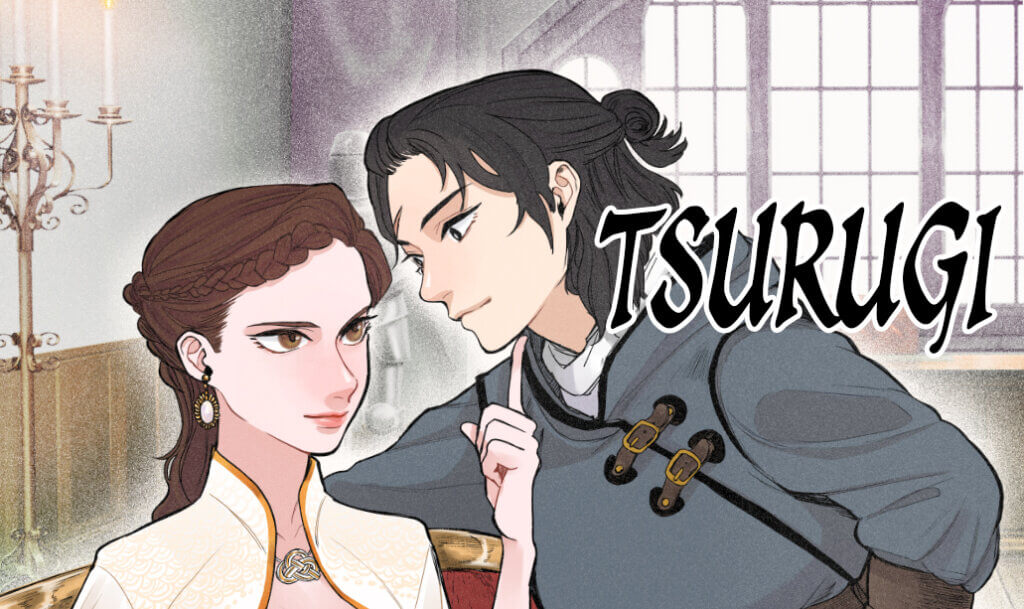
I’m doing things that I really like
WESCOTT: How did you end up in Japan?
ESNARD: I came here because I wanted to be a professional weaboo, a pro otaku. If I could be involved with anime and manga every day, I thought, I’ll never hate my job. Now I’m working too much and am tired all the time. But I don’t hate it, because I’m doing things that I really like.
WESCOTT: You came over with the JET program, right?
ESNARD: I came in 2019, right before Covid. I was placed in Hyogo prefecture in this tiny 60,000-person city, which was six 10,000-person towns close together. I still live there now.
WESCOTT: Then, a year or two later, you reached out to other JET folks and asked if they wanted to join you in localizing comics.
ESNARD: A lot of JET teachers came to Japan for the same reason that I did. They wanted a job in the industry, or were interested in Japanese culture. But as a teacher, you have downtime, and my peers wanted to make sure they had a marketable skill afterwards. I had that same concern. I loved my town, and I was happy to teach English for five years. But I didn’t want the last five years of my resume just to say “English teaching.”
During my downtime, I found artists happy to have their work translated because I asked them politely. Some of them sent me files, and I made friends with other ones. That’s how I got here today, by making a name for myself in a small community of manga artists. Since then, many of the JETs I worked with have gotten careers in the fields they wanted. They can proudly say, “I did this translation, and it wasn’t a fan translation on a pirate site. It was posted on the artist’s account.”
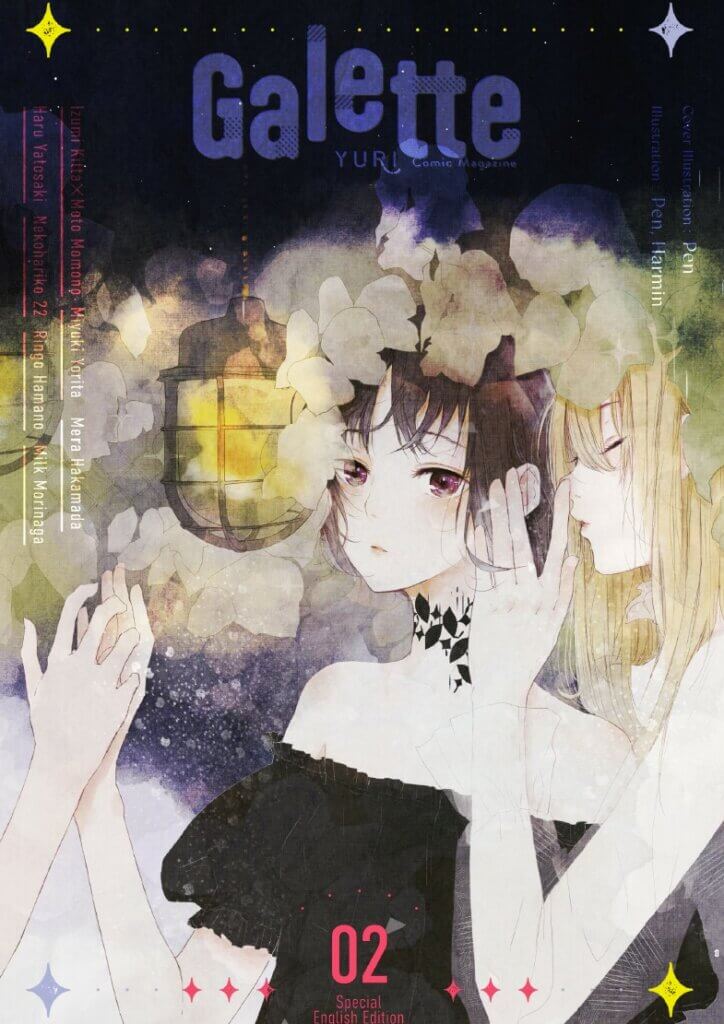
Heard and respected
WESCOTT: There’s been discourse about fan translations lately. Deb Aoki said, “Once you put something on the internet, even if you mean well, you don’t know where it’ll go, and you can’t take it back.” Just like what you said about how when you are representing an artist’s work, you have a responsibility to present them in the best possible light.
ESNARD: There was a period when posting viral four page manga on Twitter to capture the attention of a larger publisher was the thing to do. Because the content was so short, there was a rapid explosion of fan translations for these pieces. I thought, “This artist is making short manga to find recognition so that someone will pay them for a serialization. Can I help with that, and can I do it in a way where they feel heard and respected?” Their DMs are open, so I went in there, and it worked out.
Longer manga series, however, require so much support from so many people. If you look at the Manga Plus app, you’ll see that some of the manga there is done by VIZ. But there are other companies, my own included, that will do work for them, as well. Shueisha isn’t sending us those files directly. It goes through other companies before it lands in your hands.
WESCOTT: Has being a part of this process changed your own relationship with manga?
ESNARD: Absolutely. I don’t think you consider when there were a hundred people involved in making a video game, or a thousand people involved in bringing a film to a theater. But every person who works on one of those projects is human. For instance, the manga artist Yoshihiro Togashi has a bad back, so he’s had to take lots of breaks. As much as we all love Hunter x Hunter and want more, what’s more important than Togashi being able to stand upright and live an enjoyable and comfortable life? We don’t want anyone to have health problems just so they can draw manga for us to read.
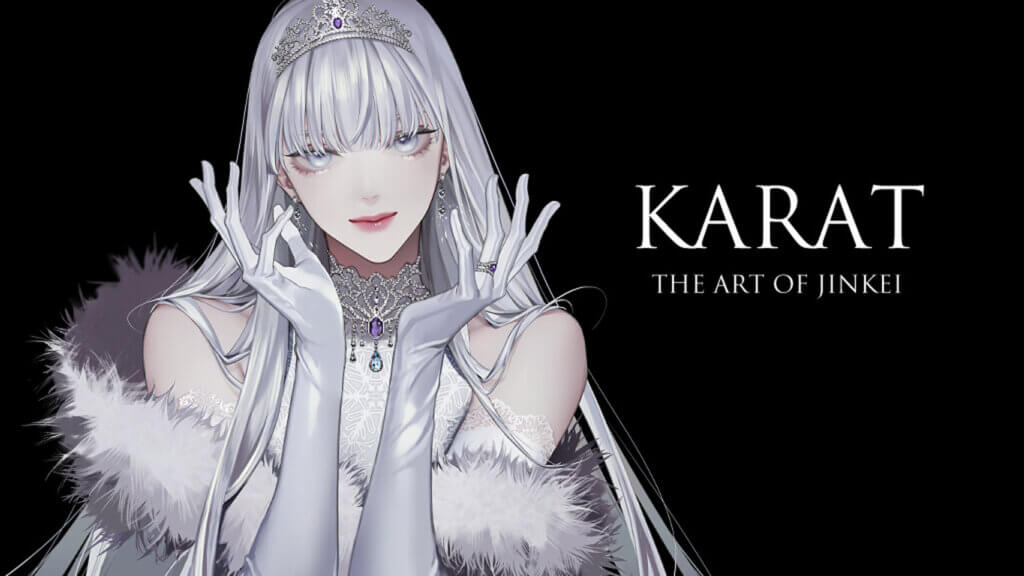
It always comes down to money
ESNARD: But with business contracts, everyone has to make a concession in some way, and it always comes down to money. If that artist is being paid as a contractor, they might still own the copyright to their manga. But they also have to follow the instructions of their client or their publisher. If the publisher doesn’t want what you’re offering them, they don’t have to pay you.
WESCOTT: Is this something you have witnessed on the management or localization side, as well?
ESNARD: One I can talk about is The Flower Princess of Sylph, which is another project that I got involved with recently. This was a GL manga that was canceled after three volumes and 17 chapters. The manga artist, Kamejiro-sensei, had the entire series planned out for seven volumes, and is continuing that serialization independently on their own. They release a chapter every month on their Fanbox, which is the Japanese equivalent of a Patreon. They reached out to their editor at Kadokawa and had their global team translate the first 17 chapters of Flower Princess because there was enough demand for it. A month or a year ago, nobody was buying enough of the book for Kadokawa to care.
There are great stories that are passed over because whatever number that needed to be hit was not hit. It’s more than likely an issue with marketing. If you suspect that one new series might be more popular than another because of the data you’ve collected, chances are you’ll put more into the series that’s likely to find success.
WESCOTT: But when someone releases their comic on the internet, like you said, that opens up different possibilities.
ESNARD: It makes the path shorter, but then you have a lot of responsibility as a solo artist. For instance, I wouldn’t consider myself good enough to be a translator, but I am able to do everything else. That means I can do three or four different jobs that, in a larger company, would be done by separate people. That solo manga artist also has to be their own marketer. They have to constantly post on social media so that people know who they are.
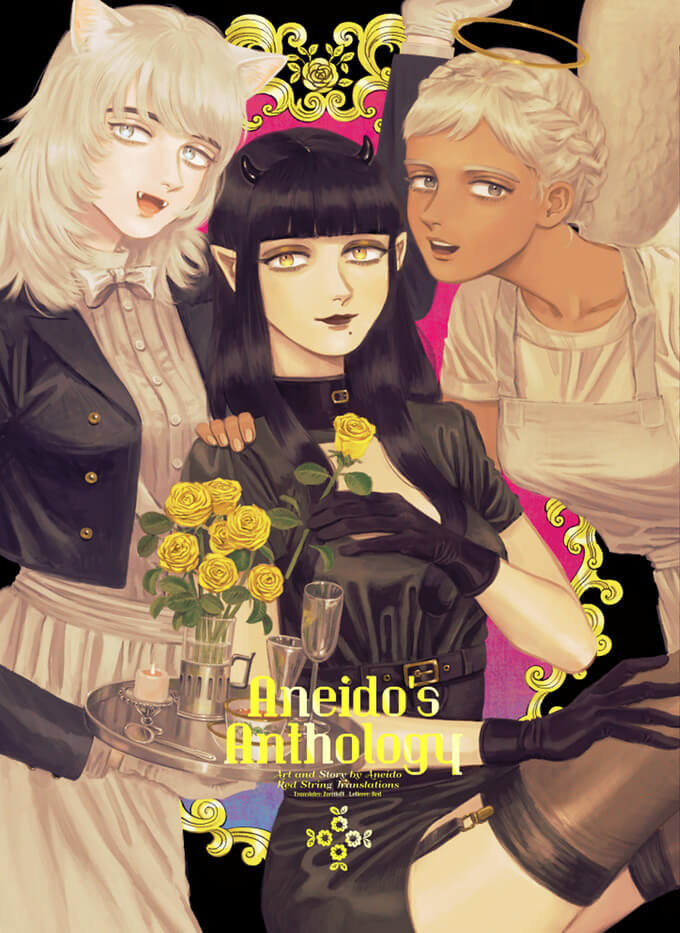
I’ll let myself work hard
ESNARD: When Red String started doing Kickstarters, a group of GL artists reached out to us. Within a year, we’d done eight Kickstarters with them. Most of them were GL, and they were all successful. When these artists have a serialization, they are paid for the pages that they put in and for royalties based on how many books are printed, as well as digital readership. For Kickstarter, though, they make a book all on their own. They fund the printing themselves when they go to events like Comita.
Kickstarter’s platform gets you marketing reach from subscribers waiting for interesting projects to drop into their email inboxes. So artists get so many more eyes on their work than Twitter allows. If I could help a mangaka bring in a year’s salary in a month for a book that they worked on, I thought, perhaps they might feel more comfortable continuing to draw, because they wouldn’t be living in squalor or overworking themselves for another paycheck. I want them to be able to focus on their art, and to do it without feeling pressure to be successful. But I’ll let myself work hard because I don’t have boundaries.
WESCOTT: But like you’ve said, there are yuri comics out there with a big audience.
ESNARD: Big, but not big enough. Publishers skip on GL unless it’s mega successful. The Guy She Was Interested In Wasn’t a Guy at All, or “green yuri” as we call it, is an exception. You don’t even need to know what the title is, you can just say “the green one” and everyone knows what you’re talking about.
WESCOTT: What do you think it is about that one that made it such a success?
ESNARD: The fact that it’s green, which is so cool. If you’re scrolling on Twitter, where everything is in black and white, and suddenly there’s a pop of color, it captures your attention. The story is well written, the art is good, the relationship is good, it’s super cute. They also got the rights to use certain song lyrics in the book, which is difficult. But the green part is what stands out.
The old Shojo Beat comics were printed in pink and blue. I loved that. The last story in the second volume of Galette is also printed in purple ink. The Galette books are pretty nice, I’m not gonna lie. They’re tall and thick with color pages in the pack and the front. Right at the end of that second volume is the pop of color of the short little one shot. Aneido’s newest release will also feature color pages, too. Not full color, but colored ink instead of black.
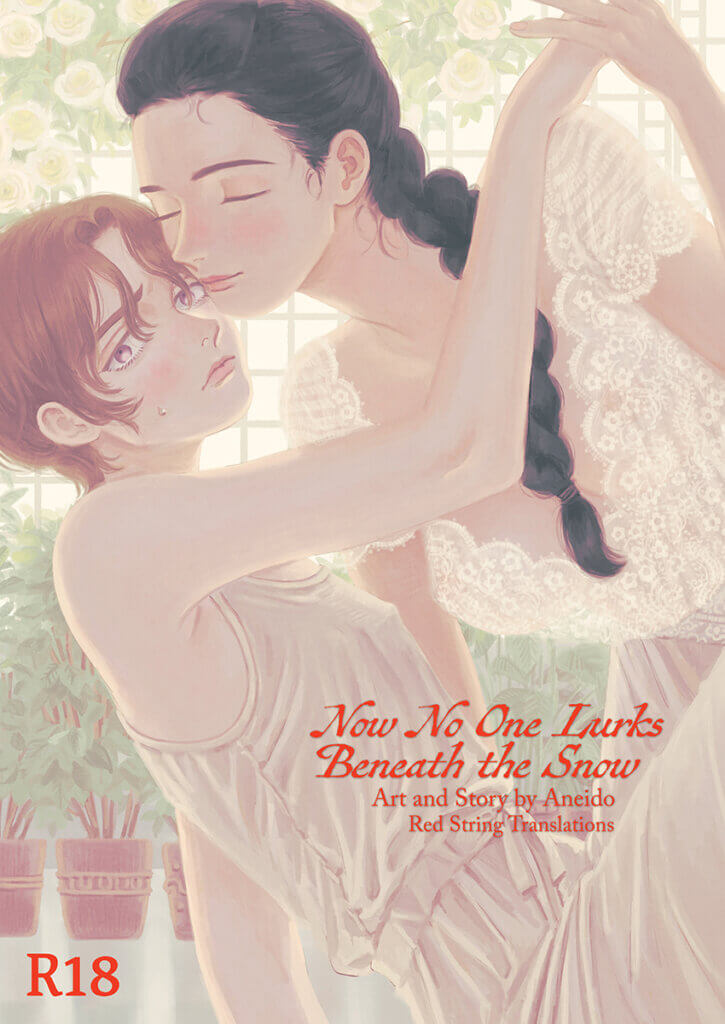
My biggest fan
WESCOTT: You’re working directly with the artist as well to make that happen, too.
ESNARD: I’m Aneido’s biggest fan, and they’re my biggest fan. They put Red String Translations on the cover of the books before they send the files to us. It’s a fantastic partnership; I’m so happy to support them. Every time we do a Kickstarter and they make six or seven million yen in a month, I hope it gives them confidence that people enjoy their work.
An Aneido Kickstarter might have 500 to 600 backers. If you told a publisher that your book would sell less than a thousand copies, they would not be happy with that. You’ve seen the numbers on the Oricon charts—it’s hundreds of thousands, tens of thousands of books. But those Kickstarter sales are sold to people who cared about that book. I understand they might be ignored for a more popular title that might also interest them. But GL fans do want to buy things even if their genre might not sell over 10,000 copies. If I can find those 500 fans and connect them with the artist through translation, marketing support, distribution or whatever else they want, I want to do it.
WESCOTT: Do you have upcoming projects you’re working on that you’d like to call out here?
ESNARD: Definitely The Flower Princess of Sylph. We’re releasing the first new chapter of that in a couple of weeks. I was planning to announce this at Anime Expo, but I won’t be attending, although Manga Mavericks will do a couple of shout-outs for me. We did get the original translator from Kadokawa, Mizuho Ota, working on the serialization, so the voices will be consistent. Ota is fantastic; I’ve never seen another translator use “skedaddle” as onomatopoeia.
There will be two new books coming out in the fall, which we will be offering through the Manga Mavericks store, as well as our retail partners in Europe and Canada. I want to put out a four volume box set with everything we’ve released so far. Also, I promised on Twitter a while ago that I’d get some old man yaoi, which I have done. One is a workplace story about a 30-something-year-old man with a younger guy. The announcement will be at Anime Expo, but if you want more info, Deb Aoki shouted out this series in the past. The other is very not safe for work; I’m hoping to do a Kickstarter this summer, but it’ll require a little more planning.
WESCOTT: I have one more question: you wrote in our communications earlier that you’d just been to the Hunter x Hunter 2.5D stage. What can you tell me about manga stage performances?
ESNARD: I haven’t been going to as many shows recently, but I’ve been to at least 20 since I’ve moved here. Here’s what I’ll say to anyone curious about going: it won’t be like Oshi no Ko— they don’t have that level of technology. You will see a lot of really passionate fans together in the same room. There’s some very interesting audience interaction; at the Hunter x Hunter stage, they treat you like you’re taking the Hunter Exam with the characters. The guy who poisoned the juice tries to get people in the audience to drink the juice. Hisoka’s there, too, and they made him even better somehow than in the manga. He’s not being weird with Gon so much as he’s being weird with the audience, because he knows there are women in the audience who want that. It’s so good, you have to see it in person.
The Chainsaw Man stage is probably the single best that I’ve been to. When Denji transforms for the first time, they have a contortionist come out with the mask. He was jumping, flipping, and doing all kinds of things. Then he started hacking people up and spray came out of the stage. There was an audience splash zone. It’s amazing what they can do!
You can find Red String Translations on Bluesky as well as their website.
Article edited by: Anne Lee
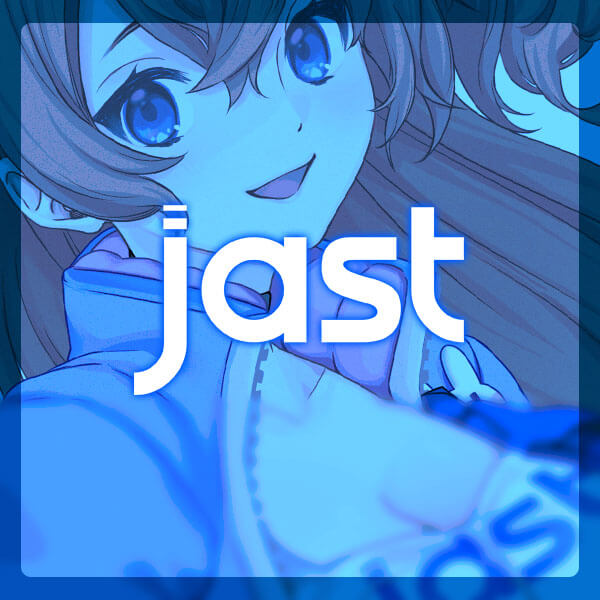
Featured Sponsor - JAST
The sweetest romance and the darkest corruption, the biggest titles and the indie darlings; for visual novels and eroge, there's nowhere better.
Big thank you to our supporters
From their continous support, we are able to pay our team for their time and hard work on the site.
We have a Thank-You page dedicated to those who help us continue the work that we’ve been doing.
See our thank you page